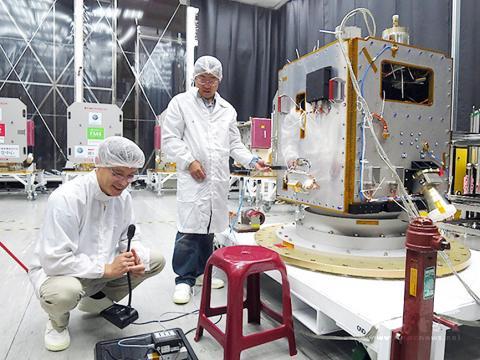
The nation’s second domestically developed satellite, Triton is slated to be launched in the second half of 2021 by French firm Arianespace at a base in Guyana, the National Space Organization (NSPO) said on Friday.
Dubbed the “Wind Hunter,” the satellite will be tasked with gathering data about sea wind and working with the Formosat-7 constellation to advance the nation’s weather forecasting capacity, NSPO Deputy Director-General Yu Shiann-jen said.
The six-satellite Formosat-7 constellation — a Taiwan-US collaborative program — was launched by the US company SpaceX with other foreign satellites from the Kennedy Space Center in Florida on June 25.
The nation’s first domestically developed satellite Formosat-5, a remote-sensing satellite, was also launched by SpaceX on Aug. 25, 2017 from the Vandenberg Air Space in California.
For the Triton launch, two companies — Arianespace and another foreign firm — competed for the bid, Yu said.
Most of Triton’s critical components and payload instruments were developed by Taiwanese personnel, with its ratio of indigenous development reaching 87 percent, 9 points higher than for Formosat-5, he said.
Its payload instrument — the Global Navigation Satellite System Reflectometry (GNSS-R) — as well as other critical components, such as the onboard computer, the power control unit, the GPS receiver and a fiber-optic gyro, were developed by NSPO personnel, Yu said.
The cubic satellite, measuring about 280kg, is equipped with a deployable solar panel on one side, according to Triton’s project description on the NSPO’s Web site.
It will be launched with other satellites from an orbit of 500km to 600km from the ground, with an inclination angle of no smaller than 24°, while the actual parameters should be confirmed along with other satellites, the NSPO said.
Some of the techniques used in developing Triton were an improvement on those used in Formosat-5, and they would be further advanced when developing the nation’s next satellite program, Formosat-8, a remote-sensing satellite, Yu said.
Additional reporting by CNA